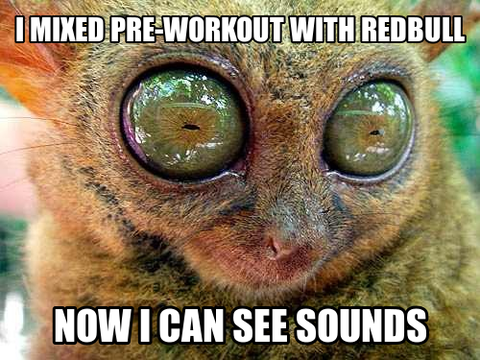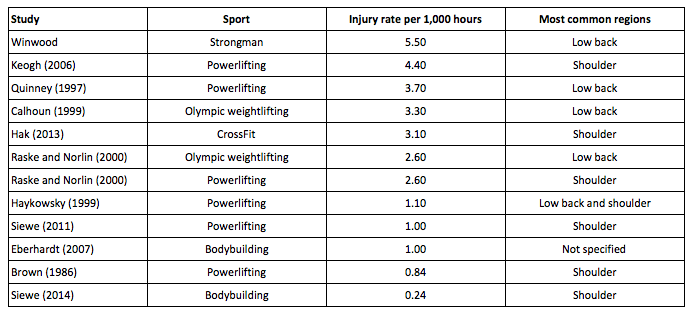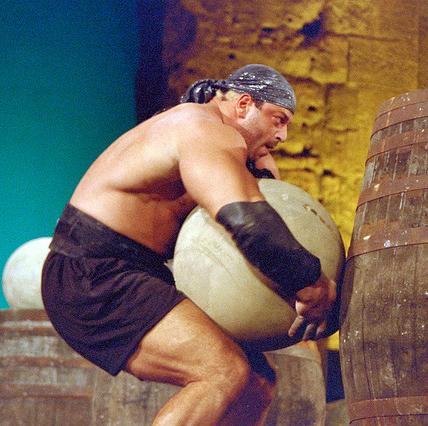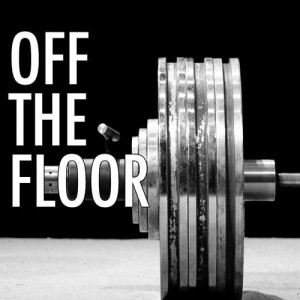Will Your Back Explode If You Flex Your Spine When You Deadlift?
Short answer: No.
Long answer: probably not, but there’s some risks to it that could easily be avoided by not flexing the spine.
The thing with deadlifts is everyone tends to have a thought on the matter, and they usually go “I DO (this specific technique thing) WHEN I DEADLIFT AND I AIN’T INJURED, BRAH!!” To that, the only real answer is to give a golf clap and a fist pump, then join them in a pre-workout for their post workout.
There’s two main camps of deadlift technique out there: those who feel more power can be gained from flexing the spine during the lift, and those who think you’re going to poop a kidney and ruin the back of your pants and everyone else’s day if you allow even a degree of flexion at any time. Both extremes exist and offer specific benefits and limitations, and as always, the best fit seems to be somewhere in the middle.
First, let’s look at why flexing the spine on a deadlift would be a good idea.
When you set up with a slightly rounded thoracic spine, you have a bit of a mechanical advantage over a more flattened spine in that your hip and knee angles can be somewhat closer to neutral, and in a way it’s essentially shortening the range of motion they have to go through, while also putting them into more of a power position by being in a shortened state. This is advantageous if you are looking to pull max lifts and have some significant degree of upper back strength to maintain this position without letting your low back compensate and wind up going into flexion as well. Many competition lifters utilize this to help them pull ungodly amounts of weight.
[embedplusvideo height=”479″ width=”600″ editlink=”http://bit.ly/1w0LtH4″ standard=”http://www.youtube.com/v/FkRkPigvO9Y?fs=1″ vars=”ytid=FkRkPigvO9Y&width=600&height=479&start=&stop=&rs=w&hd=0&autoplay=0&react=1&chapters=¬es=” id=”ep8674″ /]
Most competition suits also limit mobility into hip flexion, meaning the set up becomes exponentially harder to get your hips down if you’re wearing a multiply suit.
I should make a note here that THE AVERAGE GYM GOER IS NOT A COMPETITIVE GEARED POWERLIFTER, AND THEREFORE SHOULD NOT BASE THEIR TECHNIQUES ENTIRELY OFF OF WHAT A GEARED POWERLIFTER DOES WHILE WEARING GEAR.
As mentioned earlier, the trick to this is ensuring the thoracic spine is going through flexion and not the lumbar spine. Skilled lifters can do this, whereas novices tend to round their low back moreso than their thoracic spine. Even then, it’s not a forced flexion, like you’re trying to get more and more round, but rather a reaction to lifting copious amounts of weight and it pulling you in to flexion.
Bret Contreras wrote a really awesome piece on how to Increase Your Deadlift, including a breakdown on all joints involved, specifically looking at rounded versus flat spines when lifting, so check that out for another take on the concept. In it, he states: “Over time, tolerance to roundback deadlifting may be something that can be trained and improved upon, as many of the top strongman competitors and powerlifters perform the movement in this manner. But there’s not good evidence to support this as of yet.”
Next, let’s look at why flexing the spine would be a rough idea
Spine flexion with compressive loading is a known injury mechanism to the lumbar spine discs. There are certain movements that produce specific injuries, like planting a foot, locking out your knee and crossing your feet in stride rapidly will rip up your ACL, rapid uncontrolled neck flexion will cause whiplash, pronation will mean Communism wins, and being a 120lb kid doing 5lb wrist curls makes baby Jesus cry.
Flexion of the spine while under compressive loading is known to posteriorly pressurize the lumbar discs, and tear the annular layers of the disc, allowing the nucleus to posteriorly migrate and compress either the central or lateral nerve root. If you’re one of the people lucky enough to be born with a limacon shaped disc (looks like a lima bean), you’re more likely to have a directionally concentrated herniation at one point, whereas if you have an ovoid shaped disc (more like an oval) you’ll have a more dispersed herniation that meanders through the annular layers versus shooting straight out of that sucker. Disc shape isn’t something you can tell just by looking at someone, so you have to guess and guess lucky when it comes to what kind of herniation you’re willing to get.
Now this doesn’t mean the first time you flex your spine you’ll immediately herniate, nor does it mean you will herniate on the 5,000th flexion. It also doesn’t predicate that your disc can’t actively remodel to allow for better force butressing against flexion moments that could potentially damage it and actively making the disc more herniation resistant. These are features that may be present, but they may not.
If you flex when you pull heavy, you might be fine for 5 years or so. Then one day, something happens, whatever “something” might mean. Flexion applies about 10 times the shear force to the discs compared to a neutral spinal position, so while it may make the lift easier for the hips and knees, it transfers that load to the low back, if not controlled and isolated to more of the thoracic spine.
[embedplusvideo height=”367″ width=”600″ editlink=”http://bit.ly/1w0MJdc” standard=”http://www.youtube.com/v/yyWmPznq9dA?fs=1″ vars=”ytid=yyWmPznq9dA&width=600&height=367&start=&stop=&rs=w&hd=0&autoplay=0&react=1&chapters=¬es=” id=”ep2393″ /]
An article published on Strength & Conditioning Research showed the injury rates among powerlifters, strongman competitors, crossfitters, and bodybuilders, and showed that the injury rates are highest among strongman and powerlifter competitors, with the most common being low back injuries, many of which are disc related.Olympic lifting, which always involves a deadlift off the floor to begin the movements, also scored high in low back injuries.
This is taken without context of knowing whether the injuries were the result of specific techniques or positions, and also based on the reported data available. Please review the link for more info on this article and injury rates.
If you’re hell bent on flexing your spine when you lift, you’re playing with fire in that it can increase your chances of having a disc related back injury through no other means than simple geometry and leverage aspects of biomechanics. The weight you can lift may be mildly more, which if you’re a competitive powerlifter is a very beneficial thing, but the risk may outweigh the benefits.
Now let’s talk about some of the benefits of a non-flexed spine.
Maintaining a roughly neutral spinal position will help reduce shear forces acting on the lumbar spine while also reducing the compressive delamination of the discs that could lead to a herniation. That sounds so hot, doesn’t it? You wanna make out with that sentence, admit it.
Focusing on neutral spinal positioning versus flexed is a great place for beginners to learn how to hip hinge, set up for a deadlift or other hip extension based movements, and reduce the impact of low back involvement, which will help to reduce injuries to the low back as someone gets stronger. Then over time and many many training cycles, a person may be strong enough to allow for a gradual drifting into more flexion. It would be pretty hard to maintain a neutral spine for an activity like an Atlas Stone Lift, a strongman movement where a large spherical rock is lifted off the floor and put on to an elevated platform.
Part of the technique here is to hook the ball with the pecs and hips, which involves some significant flexion of the spine to lock the ball into place and not drop it. If you tried to do this with a neutral spine, you’d lose contact with the ball in a number of places and make it a lot harder to lift the weight. But you’re back probably wouldn’t hurt.
All of this is to say that there’s a best time and place to use both a flexed and neutral spine when lifting. If you’re trying to pull 1000 pounds off the ground, you’ll inevitably wind up breaking neutral. If you’re a greenhorn looking to grab your first bar, trying to get deeper into the question mark pose is going to be less than beneficial with you.
If you wanted to know more about the specifics of deadlifting biomechanics, positional variations, and how to become a damn human crane in terms of lifting heavy stuff off the floor, pick up a copy of Dave Dellanave’s awesome e-book Off the Floor. It’s celebrating its one year anniversary, and as such Dave is putting it on sale for less than half price until November 7th, 2015, plus there’s a bunch of new content, videos, and awesomeness all around. But it’s only on sale until the weekend, so get it fast.
===> Get Off The Floor Now!! <===




8 Responses to Will Your Back Explode If You Flex Your Spine When You Deadlift?